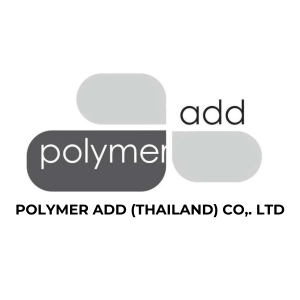Plasticizers For PVC And Their Benefits, Uses And Applications
Group Key Benefits Typical use Preferred Applications Common Products Adipate Excellent flexibility Low-temperature stability Flexible films Sheets, Cables Flooring Outdoor Dioctyl adipate (DOA)Diisodecyl adipate (DIDA) Benzoate Excellent solvating. Flexible films Bottles, Medical devices Clear PVC Diethylene glycol dibenzoate (DEGB)Dipropylene glycol dibenzoate (DPGB) Citrate Excellent flexibility Low-temperature stability Food packaging Medical devices Children’s toys Household, Food […]
Plasticizers For PVC And Their Benefits, Uses And Applications
Group Key Benefits Typical use Preferred Applications Common Products Adipate Excellent flexibility Low-temperature stability Flexible films Sheets, Cables Flooring Outdoor Dioctyl adipate (DOA)Diisodecyl adipate (DIDA) Benzoate Excellent solvating. Flexible films Bottles, Medical devices Clear PVC Diethylene glycol dibenzoate (DEGB)Dipropylene glycol dibenzoate (DPGB) Citrate Excellent flexibility Low-temperature stability Food packaging Medical devices Children’s toys Household, Food […]
Adipates As Plasticizers In PVC
Adipates are a class of chemicals that are often used as plasticizers in PVC (polyvinyl chloride) formulations. Plasticizers are additives that are added to PVC to improve its flexibility, workability, and durability. Adipate plasticizers, such as diisodecyl adipate (DIDA) and dioctyl adipate (DOA), are commonly used due to their low volatility, good compatibility with PVC, […]
Zeolite Micronized
Zeolites are crystalline, aluminosilicate minerals with a porous structure. They have a wide range of applications due to their unique properties, including in the field of polymers. Here are several ways zeolites can be used in polymers: Fillers and Reinforcements Zeolites can be used as fillers or reinforcing agents in polymer composites to improve mechanical […]
Trisodium Phosphate ( Micronized)
Micronized trisodium phosphate (TSP) can be utilized in polymer applications for various purposes, offering several advantages due to its chemical properties. Here are some potential uses of micronized trisodium phosphate in polymers: Flame Retardancy Trisodium phosphate can function as a flame retardant in polymers. It releases water vapor when exposed to high temperatures, which helps […]
Trimagnesium Phosphate Micronized
Micronized trimagnesium phosphate (TMP) can serve various purposes in polymer applications, offering several benefits due to its chemical and physical properties. Here’s how micronized trimagnesium phosphate can be used in polymers: Flame Retardancy Micronized trimagnesium phosphate can act as a flame retardant in polymers. It can release water vapor and inhibit the generation of flammable […]
Talc (Micronized Magnesium Silicate) Micronized
Micronized magnesium silicate, also known as talc, finds various applications in the polymer industry due to its unique properties. Here are some common uses: Reinforcement Agent Micronized magnesium silicate can be used as a reinforcing filler in polymer composites to improve mechanical properties such as stiffness, strength, and dimensional stability. It enhances the modulus and […]
Talc (Micronized) Uses And Applications
Talc is a mineral that is commonly used as an inert carrier in various industries due to its physical and chemical properties. As an inert carrier, talc serves as a non-reactive medium or support for other substances without actively participating in chemical reactions. Here are a few examples of how talc is used in this […]
Talc (Surface-Modified)
Surface-modified talc refers to talc particles that have been chemically treated or modified to improve their compatibility with polymer matrices and enhance their performance in composite materials. Surface modification alters the chemical composition and surface characteristics of talc particles, often through the introduction of organic functional groups or coatings. Here are some common methods used […]
Talc (Magnesium Silicate) Micronized
TALC CAS Number : 14807-96-6 Chemical Formula : Mg3Si4O10(OH)2 Theoretically chemical composition of Pure talc by weight is 19.2% magnesium, 29.6% silicon, 50.7% oxygen and 0.5% hydrogen. In terms of metal oxides 31.7% MgO and 63.5% SiO2 with remaining 4.8% being H2O. Other elements found in talc are impurities such as Ca, Al, Fe […]
